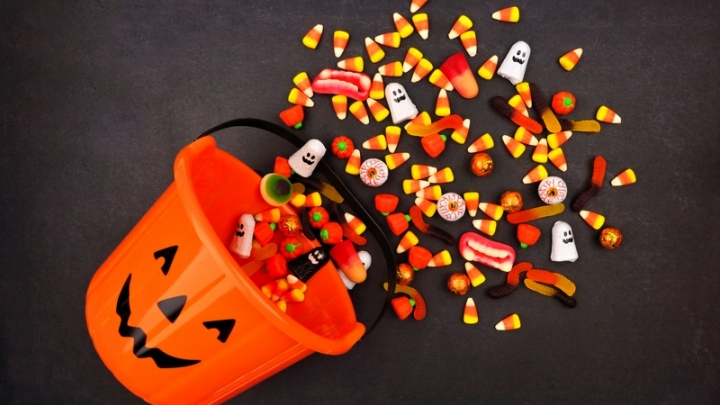(RxWiki News) Kids love Halloween because of all the candy — and parents may begrudge the holiday for the same reason.
This year, you and your kids may be celebrating it a bit differently. Whatever form your celebration takes this year, it is important to know how to keep your kids safe this Halloween.
Here are a few precautions you can take to ensure the holiday is as sweet as the candy.
1) Practice Safe Hygiene Practices
These include wearing a cloth face covering or mask when around others, maintaining social distance and frequent hand-washing.
It is important to note that a costume mask does not serve as a substitute for a cloth mask.
The CDC advises against placing a costume mask over a cloth mask, as this may make breathing difficult.
2) Investigate Before Ingesting
Here’s a character all parents should be on Halloween: Inspector Gadget. Insist on examining your kids’ candy before they eat it:
- Throw it away if it looks like someone might have tampered with it.
- If the wrapper is torn or damaged, it’s a no-go.
- Examine candy carefully for pinpricks.
- Be wary of candy that can easily be opened and resealed, such as Tootsie Rolls.
- Teach your kids to politely turn down any food that isn’t commercially packaged, such as homemade goods.
- Check with your town, as some police jurisdictions and hospitals offer X-ray screenings for Halloween candy.
Keep the number for the Poison Control Center (1-800-222-1222) handy, as well as the number for your local police station. Report anything that seems suspicious. If your kids are going out with friends, tell them not to eat any candy until you’ve inspected it.
3) Maybe No Junior Mints for Junior
Your child may end up with a bucket of candy, but not all of it may be appropriate for his or her age. Be careful of choking hazards for young children, especially those 3 and younger. Choking is a leading cause of death in children, and food, toys and coins are often to blame.
Be sure to inspect the candy for gum, peanuts or hard candies. Also, inspect for small toys they may have received in their Halloween bag.
Also, make sure your child stays still while eating — walking while eating may increase the risk of choking.
4) Avoid Allergies
If your child may have a food allergy, be sure to check the label of every Halloween treat to ensure the allergen isn’t present. Potential allergens like peanuts, tree nuts, milk and egg are common ingredients in Halloween candy.
Some children may only experience a rash, vomiting/diarrhea, an itchy nose or stomach cramps if they ingest candy they are allergic to. These are mild reactions. However, some children who are severely allergic may experience a serious reaction called anaphylaxis, which is life-threatening.
Signs of anaphylaxis include the following:
- A lump in the throat or throat tightness
- Wheezing or trouble breathing
- Chest tightness
- Tingling in the hands, feet, lips or scalp
If your child has a serious allergy, carry epinephrine.
A few things to be mindful of:
- “Fun size” candy may actually contain different ingredients than regular-size packages, so be cautious.
- It's impossible to be sure of all of the ingredients that go into someone else's homemade cookies and cupcakes. Teach your child how to politely say no to food that may contain allergens.
Speak with your health care provider about any questions or concerns you may have.







